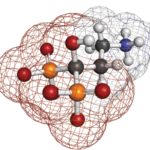When looking specifically at excess cardiovascular mortality risk, the study found a similar trend with the SMR reducing, dropping from 1.96 (95% CI, 1.64–2.39) in the ERAS cohort to 1.11 (95% CI, 0.75–1.46) in the ERAN cohort.
Jenny Humphreys, clinical research fellow, ARUK Centre of Excellence for Epidemiology, University of Manchester, and lead author of another recent study that looked at mortality trends in patients with early RA over 20 years in the U.K., emphasizes the importance of the finding of the marked increases in life expectancy over the past 20 years for people with RA found in the Norton study, and she says this finding coheres with what she and her colleagues found in their single cohort study.2
She says their study also found a decreasing trend in the SMR for RA patients, and—although it did not reach statistical significance as it did in the Norton study—she doesn’t see the results as contradictory. “The difference in our results could be explained by differences in the characteristics of the study participants [inclusion of patients with inflammatory arthritis],” she says.
The study found that the excess morality risk in patients with RA reduced over time compared with the general population.
Other Noteworthy Findings
Norton and colleagues also found that people are developing RA at a later age. The study found that the age at symptom onset increased by about two months per year, from 54.2 years in 1986 to 58.5 years in 2012. The gain in life expectancy, says Dr. Norton, was only partially offset by patients developing RA at a later age.
“While this is good news, since the gain in life expectancy was greater than the delay in onset, these findings suggest that people with rheumatoid arthritis are living longer with their condition.” The clinical implication of this for rheumatologists is the need for better and longer management of RA.
“Management of RA should continue to focus on treating patients to achieve low disease activity, thereby reducing the likelihood that the condition results in severe disability,” he says.
Clinical Implications—Importance of Early Aggressive Treatment
Emphasizing that emerging evidence does suggest that survival is improving for people with RA, Sherine Gabriel, MD, professor of epidemiology and medicine, Division of Rheumatology, Department of Medicine, Mayo Clinic, Rochester, Minn., says the cause of this improvement remains difficult to determine, given the observational nature of the data.
However, she says treatment of RA has become more aggressive over recent years, suggesting that recent changes in the therapeutic approach to RA may be responsible for the improved outcomes.



